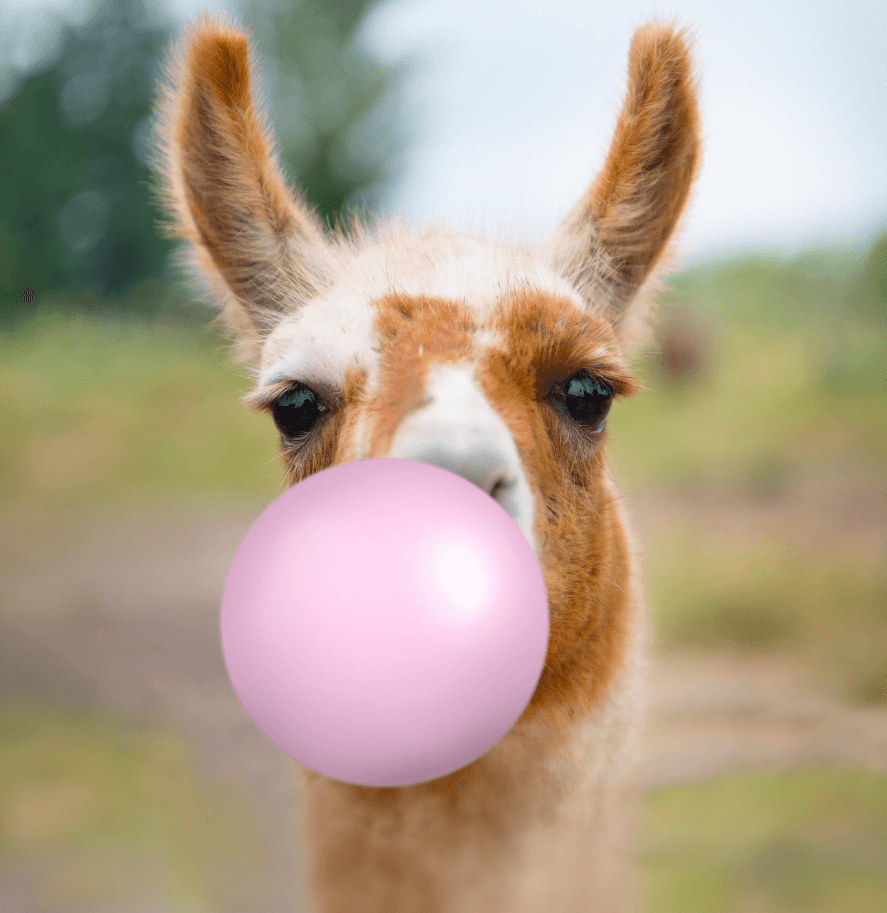People have been chewing gummy substances for thousands of years. But we didn’t get to blow bubbles with gum until 1928. That’s when 23-year-old accountant, Walter Diemer, invented the first successful version of bubble gum. Many had tried before him, but they couldn’t figure out how to sustain a nice, big bubble.
Walter worked for the Fleer Chewing Gum Company, but he experimented with new gum recipes in his spare time. He came up with a winning recipe – not too sticky, not too stiff. But the next day, Walter realized he’d somehow lost his precious bubble gum recipe. It took him four months to recreate his discovery, which was eventually sold under the name “Dubble Bubble.” Sales topped $1.5 million in the first year.
To Chew or Not to Chew?
Some chewing gum is actually good for your teeth. Why? Because it helps promote saliva flow. Saliva is the mouth’s major defense against tooth decay, and also helps to control the bacteria and other microorganisms that live in your mouth. Too little salvia can cause accelerated tooth decay, gum disease, oral sores and pain, bad breath and even interfere with your ability to taste. Your body needs to produce two-to-four pints of salvia a day to help your mouth stay healthy as well as support good digestion.
Look for the Seal
But not all gums are good for your smile. The American Dental Association (ADA) has made it super easy to figure out what gums are good to chew, and which ones can damage your teeth. Just look for the ADA Seal of Acceptance on the package. The seal signifies that this particular chewing gum has demonstrated that it can help protect the teeth. As you no doubt guessed, sugar-free gum is your best choice. But gums with the ADA seal typically also contain https://theconversation.com/health-check-is-chewing-gum-actually-good-for-your-teeth-51555 that can reduce plaque, strengthen tooth enamel, and battle cavities.
Can’t Brush After Eating?
Then Chew! The ADA encourages people to chew sugar-free gum after meals if they can’t brush and floss, or rinse. Yes, the right gum can be a treat that is actually good for your teeth! And that includes bubble gum. In fact, it’s right on the top of the list of ADA-approved chewing gums.
Obviously, though, chewing gum does not replace your dental care routine. The ADA recommends brushing twice a day with fluoride toothpaste and cleaning plaque from between your teeth once a day with dental floss or another type of interdental cleaner.
To maintain optimal oral health, you also need to visit your dentist for a cleaning and checkup, typically twice a year (follow your dentists’ advice on how often to schedule your visits). And don’t fret about the cost – you don’t have to spend a lot to keep your smile healthy – a dental savings plan can reduce the cost of dental care by 10-60% on most procedures. And, many of these plans also include savings on hearing, vision and chiropractic services, as well as prescription drugs. See what you can save with a dental savings plans today.

 Login
Login